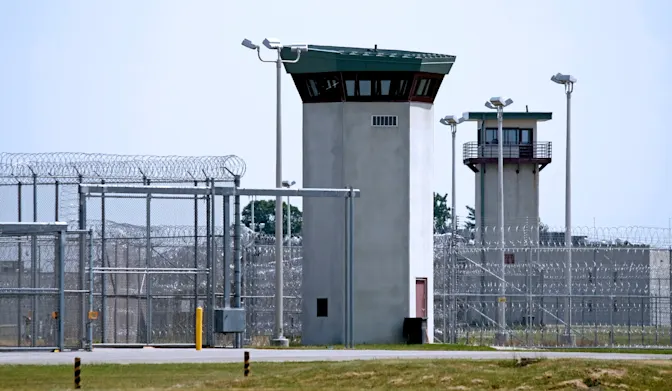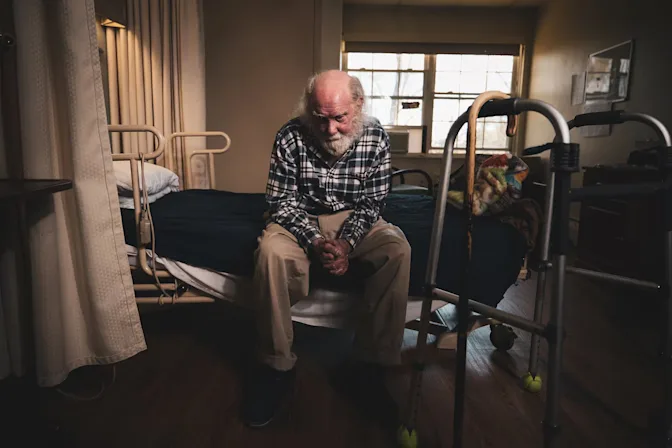
America's Oldest Prisoner
The 99-year-old Francis Clifford Smith, who has been in prison since 1950, has a compelling life story that reflects the intersection of history and the enduring impact of lifelong incarceration. His nearly eight decades behind bars prompt an examination of the American justice system and its implications for individuals like Smith, who maintain their innocence even after decades of imprisonment.

Early Life
Francis Clifford 'Frank' Smith was born in Stamford, Connecticut on September 1, 1924. According to reports, his father was a roofer, and the census did not list his mother's occupation.
Frank's family supported him through his trial, with his father asking the court for mercy and one of his sisters collapsing in court sobbing. But this wasn't the first time his family had experienced struggles with Frank and the law.
Around age 10, he was sent to a reform school, Connecticut School for Boys. Shortly after his release, he was returned to the school for breaking and entering and auto theft. He escaped after attacking a guard and was sent to state prison. After leaving state prison, he made his living stealing from various country and yacht clubs in Greenwich, Connecticut.
He was only three months into his parole when, on July 23, 1949, a pair of masked gunmen broke into the Indian Harbor Yacht Club, shooting and killing the night watchman, Grover Hart. Hart, 68, was a dedicated worker, remembered by his wife as someone who had "never hurt a soul."
The motive for the break-in was robbery, but the thieves' haul was pitiful: a few pieces of jewelry, six neckties bearing the club's logo, some tie clips, and the club manager's hat.
 Indian Harbor Yacht Club. Photo courtesy of The Boston Globe.
Indian Harbor Yacht Club. Photo courtesy of The Boston Globe.
In the hospital, Hart managed to tell police that one of his assailants was petite and wore a scarf over his face. This description immediately led police to suspect Frank Smith, who was known to wear face coverings and frequently commit crimes in the area.
The Beginning of a Lifelong Sentence
The next day, New York police found the stolen items in a stolen gray Cadillac. Witnesses linked the car to Smith and another notorious Connecticut criminal, George Lowden. Lowden struck a plea deal, implicating Smith, and was subsequently convicted of second-degree murder. Smith, discovered hiding in the woods, proclaimed his innocence.
 Frank Smith shown on the front page of The Hartford Courant in June 1950.
Frank Smith shown on the front page of The Hartford Courant in June 1950.
Despite his claims, he was convicted of first-degree murder and sentenced to death by electrocution. This judgment marked the inception of what would become one of the longest sentences in the history of the United States prison system.
The case was full of contradictions, with critical figures frequently changing their testimonies. Smith was nearly executed eight times, with each instance being halted before he could request a last meal.
Lowden refused to testify against Smith during his 1950 trial, alleging police brutality had coerced his previous statements. Then, in 1951, witness Edith Springer tearfully recanted her testimony that she had seen Smith and Lowden in the stolen Cadillac. An Alabama prisoner, David Blumetti, later claimed he was the second shooter, not Smith. Finally, the lead investigator into Hart's murder, Leo Carroll, appealed to the Board of Pardons just hours before Smith was scheduled for execution the final time.
While these developments spared Smith from the electric chair, none led to a new trial. When his death sentence was commuted to life in prison, Smith was transferred from death row's harsh confinement to the general prison population. Life on death row had been grim, with 24-hour lighting and constant disputes with his neighboring inmate, serial killer Joseph Taborsky.
Determined to prove his innocence, Smith immersed himself in legal studies, often stealing books from the prison library. He filed numerous appeals and painstakingly wrote a book-length petition for a new trial, all to no avail.
Prison Break
By 1967, having exhausted all appeals, Smith got a job in prison. According to an officer's report, he was said to have acquired skills and been cooperative working in the auto repair shop. At the time of the report, he would have been eligible for parole in three years. However, shortly after the officer's report was written, Smith stole a truck and escaped. Suddenly, Frank was back in the news headlines and recaptured outside Boston after a two-week search.
In 1975, he was briefly paroled, only to violate the terms of that parole by being charged with robbery and possession of dangerous weapons, landing him back in prison.
Questions About the Case and Potential Release
In 2012, the Director of Planning, Research, and Development at the Connecticut Board of Pardons and Paroles, Richard Sparaco, read Smith's case. He noticed that Smith had last been considered for parole in 1976, even though he should have been eligible for parole every few years. Sparaco sent a parole officer to see Smith, who shook her off. According to the Boston Globe, Sparaco is quoted as saying, "He [Smith] didn't want anything to do with parole."
 Photo courtesy of Jared Charney for The Boston Globe.
Photo courtesy of Jared Charney for The Boston Globe.
After all his attempts to appeal and claim innocence, how could that be? Some experts say it's possible that Smith was lost in the system by that point, becoming so institutionalized that he lost his identity.
After years, Smith was finally persuaded to apply for parole in 2020. According to the Boston Globe, in the hearing recording, Smith was asked why he should be considered for parole, and he paused. "I've been sitting here for a long time," he finally said hoarsely. "I'm 95 years old."
Smith was granted parole and placed into a secure nursing home in Connecticut, 60 West, where he now lives. At age 99, Smith is the oldest prisoner in America, with a total of 71 consecutive years behind bars. He spent almost 80 years in prison when calculated with his prior terms.
Despite his new circumstances, Smith reportedly seems to think he is still imprisoned. Although he could leave the nursing home to have lunch or visit friends if he chose to, Smith doesn't show any signs to indicate he actually understands his newfound freedoms.
References: Frank Smith was locked up for eight decades. At 98, what would it mean to be free? | Longest-serving CT prisoner, now 97, released 72 years after Greenwich yacht club murder| Inmate Information | Connecticut Put A Probably Innocent Guy Behind Bars For 70 Years























